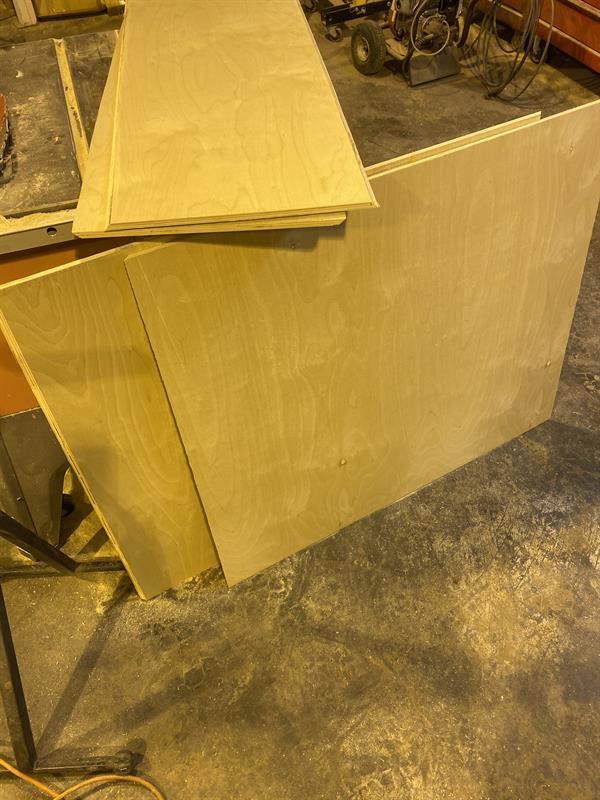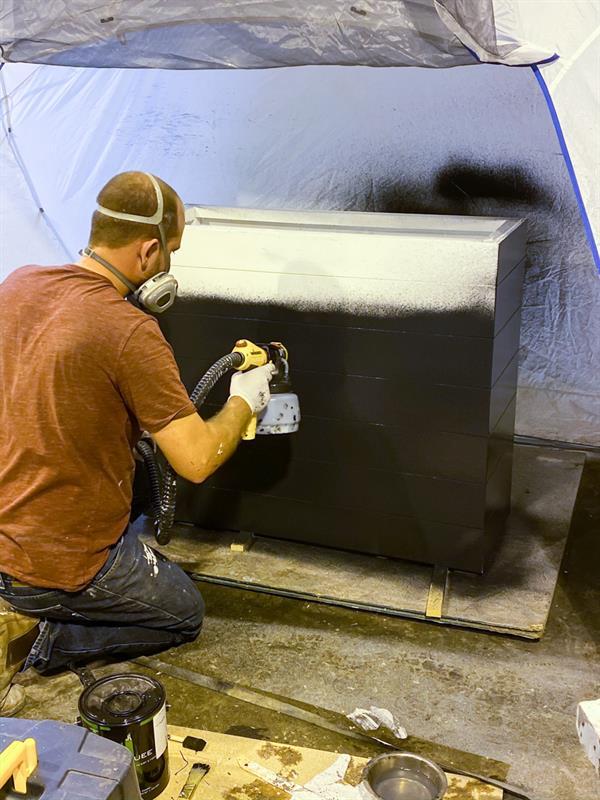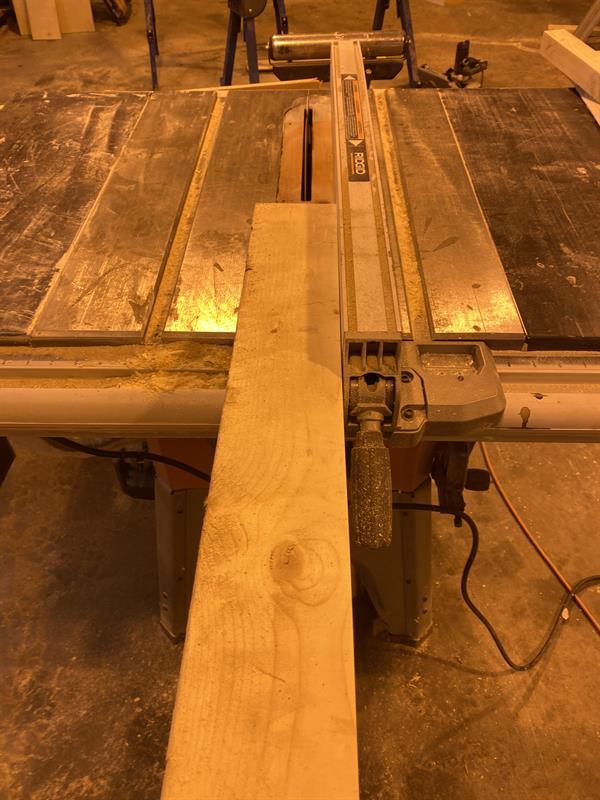Large Outdoor Planter
By Love Create CelebrateBeautiful modern large outdoor planter.
Directions
-
Prep Frame Pieces
Following the pdf drawings found in "extras" tab below assemble your frame (two sides and front and back) as shown. I used my Kreg K5 pocket hole Jig to drill pocket holes at the ends of all the frame pieces to allow for assembly.
-
Assemble Frame
To assemble the frame I used a construction adhesive (that can be used in outdoor applications) and screws for all my joints. Once screwed together and the frame is square, I used clamps to hold everything tight until the glue set. The frame on the drawings differ slightly than what I built in the pictures. The design in the pdf drawings allow for drainage to the centre of the planter. All the bracing can be built in the frame assembly at this stage (see drawings for clarification).
-
Cut Plywood - Part A
Cut all the plywood pieces down to side. I used my track saw but you could also complete with a table saw or circular saw and guide.
-
Cut Plywood - Part B
Cut the mitres along the vertical edges of your plywood as shown on the drawings
-
Secure Plywood to Frame
Using the construction adhesive, glue all the edges and nail the plywood into place. I started with the front and back and installed the sides last. You may also want to check the squareness of the box and clamp as required to ensure everything fits together and is square.
-
Build top Frame
In order to hold and hide the plastic I made a top frame. Cut Parts "A" and "B" as per the plans. I made the frame slightly larger than the box in order to be able to router it down to the exact size once the glue (suitable for the outdoors)had dried. I assembled in over the planter to make sure all the corners fit accurately.
-
Trim Top Frame to size
Once the glue has set, temporary install the top frame to your box with counter sunk screws, I pre drilled the holes and counter sunk the hole with a 1/2" drill bit in order to be able to cap the hole with a 1/2" dia. plug latter on. With the Frame in place you a router with a flush cut bit to cut the over hang off.
-
Prep Bottom
I changed the plans for a better design that what was build in the pictures, but they are both the same idea. Following the plans, cut the bottom for the planter out of plywood, add the notches on the sides and the hole for drainage in the center. Once cut to size cut the board in 1/2 to allow for installation into the planter box.
-
Install Bottom
Using construction adhesive and nails and/or screws, secure the bottom plywood to the middle frame supports (Parts "H")
-
Build Bottom Base
Using a 2x4 cut your boards as per the plans and glue (outdoor friendly) and screw together.
-
Add Faux Board Marks
I used my track saw (but you could also use a circular saw and guide) to add faux lines to give the plywood a faux look. The lines were spaced out at 5 1/4" spacing from the top (including the top 3/4" frame).
-
Fill any holes and prep for Paint
Using chalking, I filled any nail holes and seams on the planter. I also sealed the plywood bottom. I than gave the entire box a light sand.
-
Prime
I primed the entire planter with Bullseye 1-2-3.
-
Paint
Once the Primer was dry I painted the entire planter with an exterior paint and primer product.
-
Install Base
Once the paint was dry I installed the base to the bottom of the planter
-
Install plastic liner
I then install the plastic liner into the top of the planter. I placed it into the corners and used nails to hold it in place. I cut the edge of the plastic so that there was approx. 3/4" gap between the edge of plastic and the outside face of the planter.
-
Install Top Frame
I then put a bead of construction adhesive around the perimeter of the planter and secured the frame down with screws. I filled the holes with 1/2" wood plugs and used chalking to fill the gap/seams/holes/imperfections. Once the chalking dried I gave it a light sand, and gave the entire planter another quick coat of paint.
-
Cut Frame Pieces
I used 2x4 for the frame pieces as that is what I had in my shop, but you could also use 2x2 which is already are 1 1/2" x 1 1/2". I ripped the 2x4 down to 1 1/2" x 1 1/2" on my table saw. You can also run them a planer to clean them up but you will need to take in account the smaller size for you dimensions (dimension assume 1 1/2").


























